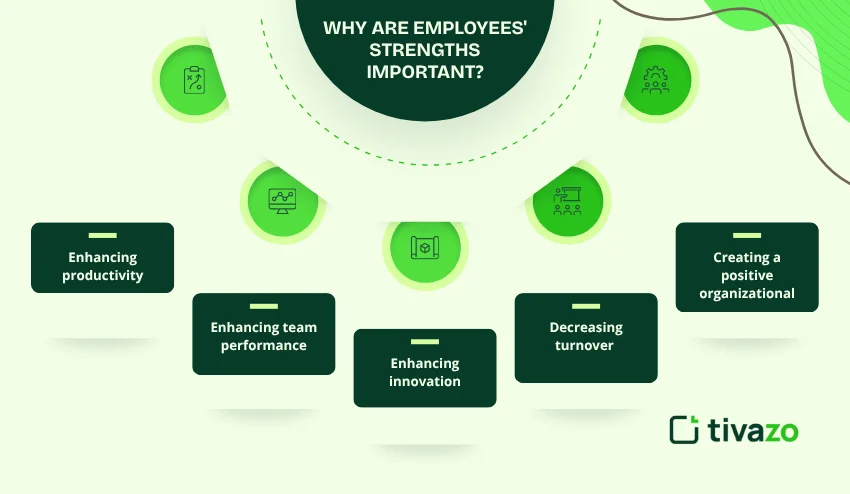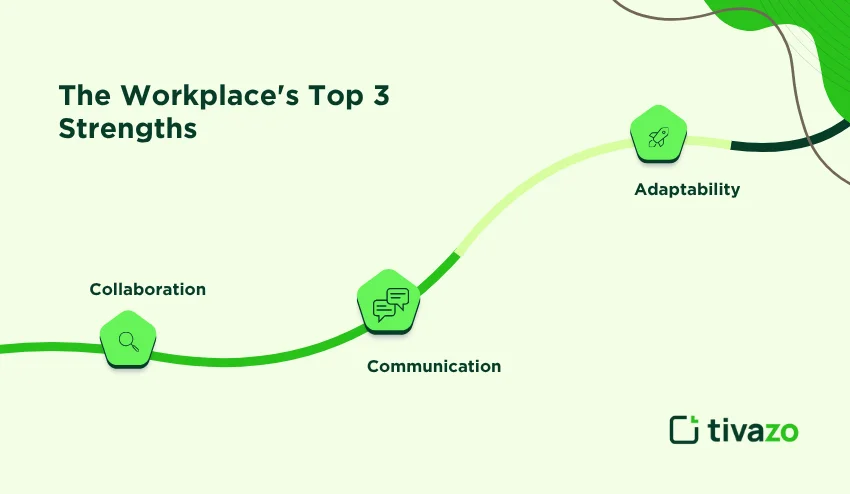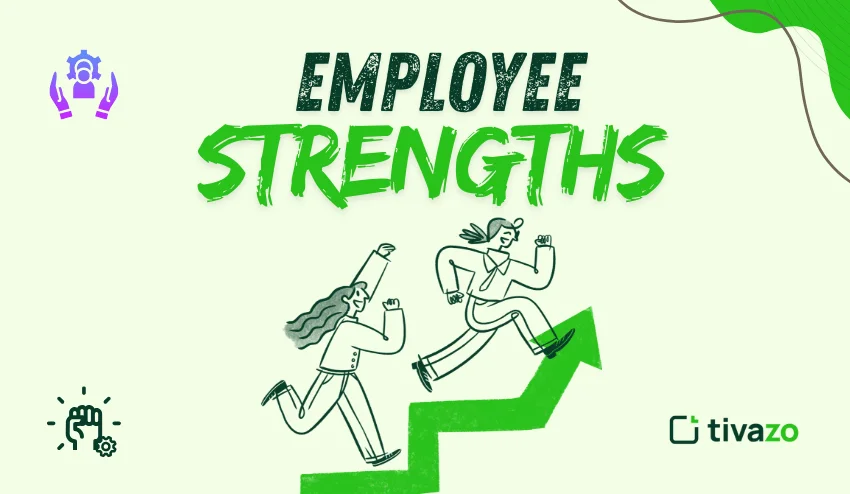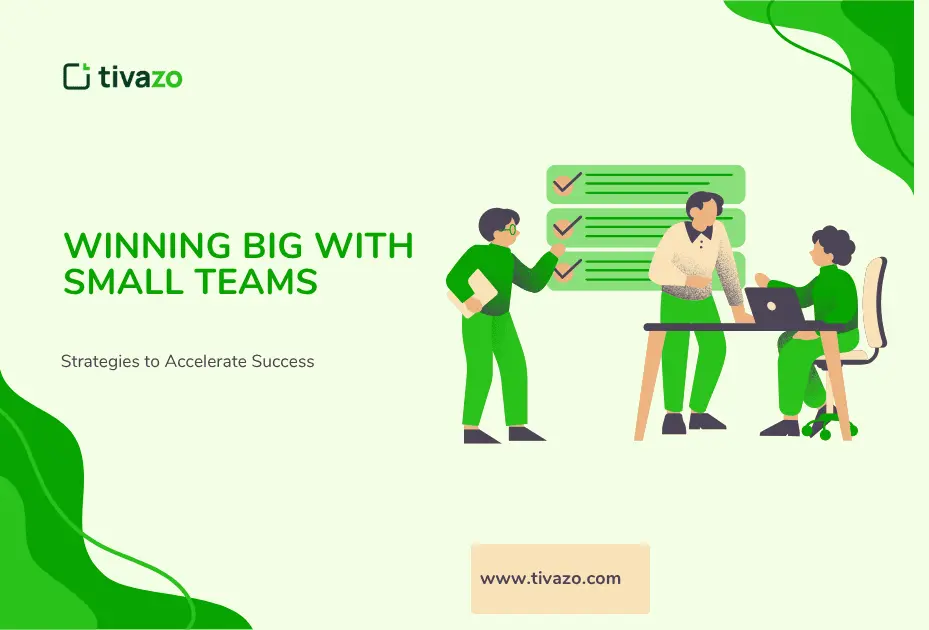The success of every organization relies on one key component – employee strengths. When employees know their strengths and employers know how to use them productively, productivity, morale, and innovation will skyrocket. When employees understand their strengths- and can utilize them – performance will improve while creating trust, engagement, and a culture of collaboration. This guide will describe what employee strengths are and provide examples of key strengths, how to develop employee strengths, and how to turn “weaknesses” into growth opportunities for your organization to be successful in a competitive marketplace.
What is meant by Employee Strengths?
Employee strengths can be defined as innate abilities, traits, and other skills that allow an employee with these strengths to perform well in a role. Employee strengths can be technical, people-oriented, or behavioral in nature, and together they capture an employee’s contribution to an organization.
In other words, employee strengths are qualities that contribute to someone’s value to the organization.
| Type | Definition | Example |
| Technical Strengths | Job-specific skill or hard skill | Data analysis, coding, marketing, and finance |
| Interpersonal Strengths | Social or communication skills | Collaboration, empathy, negotiation |
| Behavioral Strengths | Personality traits or mindset | Adaptability, discipline, resilience |
Why are employees’ strengths important?
Recognizing and utilizing employees’ strengths is essential to;
- Enhancing productivity and engagement: Employees who work with strengths drive tasks to completion quickly and have greater pride in their contribution.
- Enhancing team performance and collaboration: Each team member, using their unique strengths, creates greater flow among teams, enabling faster resolution of problems and celebration of shared goals.
- Enhancing innovation and problem-solving: Employees operating from strengths are much more likely to think creatively, take action, and bring new ideas forward.
- Decreasing turnover and enhancing job satisfaction: Employees who feel valued and rewarded for their strengths will have an increased sense of loyalty and commitment.
- Creating a positive organizational culture: Organizations that leverage employees’ strengths create trust, support, and celebration, thereby enhancing conditions for ideal employee experience.

When employees work in their zone of strength, they feel assured, excited, and engaged, giving them the willingness to do their best. Strengths-based work experiences can also assist managers when examining development opportunities and aligning responsibilities with unique talents. A greater sense of purpose is created when we consider strengths converting to causal actions and development of knowledge, making employees more resilient and adaptable, and more willing to be challenged at work.
Ultimately, strengths-based organizations foster these processes, increasing their likelihood of being an employer of choice, thus attracting and retaining high talent in the workplace; a position that enhances the competitive advantage of the organization in their respective industries.
Top 25+ Examples of Employee Strengths
The following are some of the most beneficial employee strengths that can be found on successful teams in the workplace.
1. Communication Skills: Having strong communication skills fosters trust and ensures the task is being completed correctly.
2. Teamwork Skills: Agreeing to work together generates synergy and helps the team overcome obstacles.
3. Troubleshooting/Problem-solver: Strong analytical ability and creative thought help solve Issues quickly.
4. Ability to Adapt: In an ever-changing workplace, employees who can adapt to change are the most desired.
5. Time Management: An efficient employee knows how to prioritize and meet deadlines.
6. Leadership: Leadership is not limited to management; it is about taking initiative and inspiring others.
7. Accountability: When an employee holds themselves accountable for their actions, they demonstrate their credibility and gain trust.
8. Creativity: Creative thinkers bring innovation and ideas to teamwork.
9. Empathy: An understanding of others creates improved communication and a sense of safety in the workplace.
10. Attention to Detail: An employee is meticulous and reduces errors while maintaining standards.
11. Work Ethic: Job satisfaction helps an employee’s morale, and they consistently perform at high levels.
12. Positive Attitude: A positive attitude endorses motivation and work-life balance in employees.
13. Decision Making: A decisive employee takes action promptly.
14. Critical Thinking: Employees who are critical thinkers can analyze information objectively and provide the greatest outcomes.
15. Emotional Intelligence: Employees with high EQ skills deal with relationships and stress appropriately.
16. Dependability: Dependable employees will always produce good work and can be counted upon.
17. Organization: An organized employee can take randomness and chaos and create a structured plan.
18. Initiative: Employees who act independently foster progress.
19. Self-Motivation: Motivation keeps their mind and work focused.
20. Learning Agility: The capacity to learn and apply new skills quickly is one of the top employee strengths in a time of rapid change.
21. Conflict Resolution: Successful resolution of workplace disputes ensures teams stay on task.
22. Integrity: Trustworthy employees remain true to the company and its ethical values.
23. Resilience: Resilient employees return to work after a setback stronger.
24. Flexibility: The ability to be flexible means employees can adapt and adjust to new roles, projects, or technologies.
25. Analytical Thinking: Strong analytical thinkers can make data-driven, logical decisions.
Examples of Strengths and Weaknesses

| Strengths | Weaknesses |
| Leadership | Over-committing |
| Communication | Impatience |
| Adaptability | Perfectionism |
| Teamwork | Difficulty in saying no |
| Creativity | Overthinking |
It is important to keep in mind that a weakness is not a fault; it is a developmental opportunity when handled appropriately. Everyone has a weakness, and when we identify a weakness, we can develop it into a strength and become better at our jobs. When we combine strength with strategies to address our weaknesses, we can become well-rounded and effective in our roles.
For example, a very creative person who tends to overthink could effectively manage their creativity by using structured planning techniques, or a strong leader who tends to overcommit could learn to delegate tasks, or manage their time better to aid in overcoming a weakness. In just a few examples, weaknesses can become strengths that benefit the individual and organization.
The Workplace’s Top 3 Strengths
Every workplace nurtures the strengths of its employees with any three capabilities:
1. Collaboration
Establishing unity through teamwork of employees who share ideas, help each other in their common objectives and goals. In a collaborative workplace, employees identify trust and community, increasing their engagement and job satisfaction.
2. Communication
Understanding that transparency and clarity are key to all levels of your organization. Effective communication prevents misunderstandings, aligns teams to goals, objectives, and strategies, and fosters relationships between employees and management
3. Adaptability
Moving swiftly relative to new challenges and technology. An adaptable employee indiscriminately accepts changes and continuously learns new skills. Adapting ensures an organization remains competitive in a constantly shifting marketplace.
Together, these three strengths form the basis of a high-performance organizational culture. The combination of trusting and empathetic employee relationships, consistent talent development leveraging collaboration and communication, and employees’ mindset to adapt to change, not just react, ensures the organization achieves its key performance objectives. Over time, strengthening any or all of these employee strengths will not only further enhance productivity but also drive innovation and resiliency.
A company’s focus on collaboration, open and transparent communication, and an employee mindset to adapt to the changes in the workplace fosters a culture in which employees feel valued in a work environment where they are encouraged to provide their best work.
As an employee or team developing these collaborative, communication, and adaptable skills strengthens organizational culture, they strengthen employee cohesiveness, improve problem-solving, and enhance long-term organizational success.

How to Capitalize on Employee Strengths
Recognizing employee strengths is only half the battle. The charm occurs when organizations capitalize on those strengths through strategic, supportive, and recognition efforts.
1. Have Employees Take Strength Assessments
Using personality or skill-based assessments to identify individual strengths, such as CliftonStrengths or DISC.
2. Align their Strengths with their Role
Encourage employees to work in their sweet spot, for example, work with clients if they shine in client interaction.
3. Provide Learning Opportunities
Facilitating learning via training and mentorship will help amplify key strengths.
4. Support Recognition of Strengths
Acknowledging strong performance encourages employees to go even further.

How to Convert Weaknesses into Strengths
Even top-level employees have weaknesses, but what is most important is how the employee has effectively turned this into one of their strengths.
Here’s how:
- Self-Awareness: Be honest with yourself about areas needing improvement.
- Request feedback: Ask coworkers or supervisors for feedback based on observations made in a classroom or performance-based context.
- Establish goals: Respond to analysis with an action plan to continue to build competence in these areas.
Example: - If time management was identified as an area for improvement, using your superior organizational skills, begin to develop as a more active and efficient scheduler.
- Promote Collaboration: When people work collaboratively, they can leverage each other’s unique and complementary strengths, which is where interesting and powerful progress can happen.
- Commit to Learning: Take courses, engage in best-practice training, and shy away from seeking ongoing feedback regarding your commitment to improving these areas.
- Use Strengths to Compensate: Tap into your strongest attributes to offset weaker skill areas.
- Trust Employees to Take Action: Give employees the authority to take ownership of their work. It encourages accountability and fosters confidence.
Why Focusing on Employee Strengths Builds a Stronger Organization
When an organization embraces employee strengths, it not only improves performance but also fundamentally changes the workplace culture. Acknowledging and valuing employee strengths encourages an employee’s contribution in inherently gratifying ways, and it increases satisfaction and decreases burnout in the workplace.
Employees are more:
- Engaged and motivated – In other words, employees will feel pride and put in more effort if their work aligns with their strengths.
- Loyal and committed – When employees are empowered by their unique contributions, they will be less likely to leave.
- Innovative and productive – Employees will feel more confident in suggesting ideas, creatively resolving issues, and doing their work on time when they can work to their strengths.
Companies such as Google and Netflix embrace a managed focus on employee strengths, as their research has clearly demonstrated that a managed focus on strengths has measurable, substantial results, from enhanced productivity to improved employee morale.
Organizations that shift to this way of supporting employees create a unique and powerful environment where talent thrives, teams are better equipped to collaborate, and leaders can think strategically about resource allocation. With a managed focus on strengths, organizations can effectively turn their workforce into a competitive advantage and thrive in an ever-changing market while supporting a culture of learning, growth, and recognition.
The Future of Work: Strength-Based Leadership
Traditional leadership was about fixing weaknesses. Today’s leaders focus on maximizing strengths:
- They inspire greater engagement.
- They create resilient and adaptive teams.
- They encourage the growth of innovation and learning.
- As businesses evolve, employee strengths will be the key differentiator between mediocre performance and excellent performance.
Conclusion
The recognition and cultivation of employee strengths is not just an HR activity; it can be a method of developing a strategic growth practice and is salient at all levels of the organization. While leveraging strengths, aligning them with the appropriate role within the organization, and determining how to manage employee weaknesses into strengths, organizations create agile, high-performing teams to operate in any situation.
An organizational culture around strengths is used to create increased employee engagement, encourage collaboration, and innovate the “next best thing” in any organization/professional setting, thus enhancing overall performance and longevity of the organization through agility, resilience, drive, and competitiveness in the ever-changing and unpredictable environment of today’s business climate.




